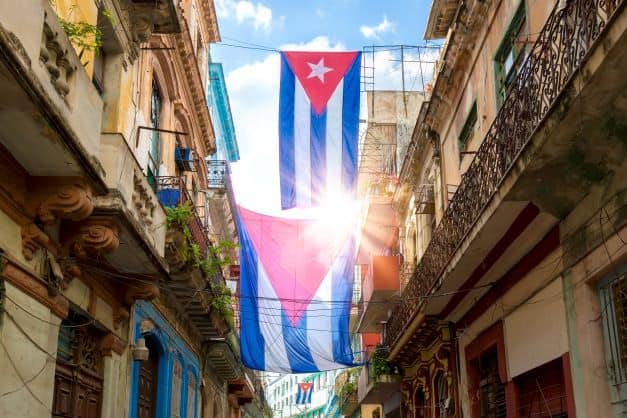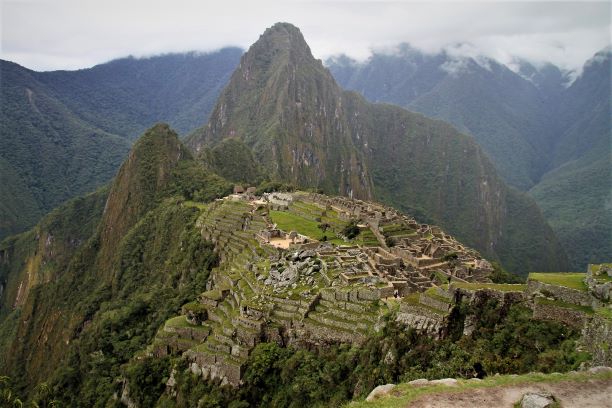What Is The National Flower Of Cuba?
Well, that is not just any flower; Cuba has chosen its flower because of various factors that have earned these petals the prestigious title of Cuba’s national flower.
Cuba, an island nation known for its vibrant culture, complicated history, and stunning landscapes, is a fascinating country and island to explore. What is the national flower of Cuba?
So, What is the National Flower of Cuba?
The national flower of Cuba is the White Mariposa (Hedychium coronarium), also known as the Butterfly Jasmine or White Ginger Lily.
This exquisite flower, with pristine white petals and an intoxicating fragrance, has captured the hearts of Cubans and visitors alike. The flower’s scientific name, Hedychium Coronarium, reflects its regal appearance, with “coronarium” meaning “crown-like” in Latin.
However, the selection of the mariposa as the national flower of Cuba is rooted in its historical and cultural significance to the country.
Historical Significance Of The White Mariposa
- National Flower Of Cuba Symbol of Resistance and Independence:
- During the Cuban Wars of Independence against Spanish colonial rule (1868-1898), Cuban women used the mariposa flower to convey secret messages. The flower’s white color symbolizes purity and the cause of freedom. Women would often hide notes inside the flower’s petals or wear them in their hair to indicate their support for the Cuban independence movement.
- Connection to Jose Marti:
- José Martí, a key figure in Cuba’s struggle for independence and a national hero, often mentioned the mariposa in his writings and poetry. His reverence for the flower helped cement its status as a national symbol.
Also read: Sensational 7 Days In Cuba Itinerary By A Local
Cultural Significance Of The White Mariposa
- Symbol of Beauty and Grace:
- The white mariposa is known for its delicate, fragrant blossoms that resemble butterflies, embodying beauty and grace. Its purity and elegance make it a fitting emblem for the Cuban people and their spirit.
- Representation of the Cuban Landscape:
- The flower thrives in Cuba’s tropical climate and is commonly found in the countryside, gardens, and homes throughout the island. Its widespread presence makes it a natural symbol of the nation’s rich and diverse natural heritage.
Also read: Solo Holidays To Cuba: Important Things To Know Before Visiting Cuba From A Local
Official Recognition As A National Flower
In the 1930s, the White Mariposa was officially announced as Cuba’s national flower. Its selection honored the flower’s historical and cultural connections with Cuban identity and the country’s fight for independence.
The mariposa was chosen as Cuba’s national flower due to its historical role in the country’s independence movement, its cultural symbolism of beauty and purity, and its abundant presence in the Cuban environment.
As a frequent traveler to Cuba over the past five years, I’ve seen the White Mariposa in various regions across the island.
Also read: 19 Best Beaches In Cuba By A Cuba Expert
What Makes the White Mariposa Special?
The White Mariposa is a true marvel of nature, boasting several unique characteristics that set it apart from other flowers:
- Appearance: The flower features large, showy blooms with pure white petals arranged in a butterfly-like shape, hence its common name, “Butterfly Jasmine.” Each blossom can reach up to 4 inches in diameter, creating a stunning visual display when in full bloom.
- Fragrance: One of the most remarkable aspects of the White Mariposa is its intense, sweet aroma. The scent is often described as a blend of jasmine and gardenia, filling the air with its intoxicating perfume, especially in the evening.
- Blooming period: Unlike many flowers that have a short blooming season, the White Mariposa flowers throughout the year in Cuba’s tropical climate. This continuous blooming adds to its allure and makes it a constant presence in Cuban landscapes.
- Adaptability: The White Mariposa is known for its resilience and ability to thrive in various conditions, from full sun to partial shade. Its adaptability has led to its widespread presence across the island.
- Medicinal properties: In traditional Cuban medicine, various parts of the White Mariposa plant have been used for their potential healing properties. The rhizomes, in particular, are believed to have anti-inflammatory and analgesic effects.
Also read: 43 Best Things To Do In Havana Solo By A Local
Where Does the White Mariposa Grow in Cuba?
Due to the climate, the White Mariposa is widespread across Cuba, the largest island in the Caribbean.
- Natural habitats: The flower thrives in Cuba’s tropical climate, particularly in moist areas near rivers, streams, and wetlands. It’s common to find them growing wild in the lush forests of the Sierra Maestra mountains or the Viñales Valley.
- Urban gardens: Many Cubans grow the White Mariposa in their home gardens, appreciating its beauty and fragrance. Walking through residential areas in Havana or Trinidad, you’ll often catch glimpses of these elegant flowers peeking over garden walls.
- Public spaces: The flower is a popular choice for landscaping in parks, plazas, and other public areas across Cuban cities. In Havana, for instance, you can find them adorning the grounds of the iconic Plaza de la Revolución.
- Botanical gardens: Cuba’s botanical gardens, such as the National Botanical Garden in Havana or the Cienfuegos Botanical Garden, showcase extensive collections of White Mariposa plants, allowing you to appreciate their beauty without venturing into the wild.
- Rural landscapes: Traveling through Cuba’s countryside, you’ll often spot clusters of White Mariposa growing alongside roads or in open fields, adding a touch of elegance to the rural scenery.
Also read: How to get a tourist card for Cuba By An Expert (Easy Guide)
Why is the White Mariposa Cuba’s National Flower?
The selection of the White Mariposa as Cuba’s national flower is rooted in both historical significance and cultural symbolism:
- Historical connection: The flower has been associated with Cuba’s struggle for independence. Legend has it that during the long fight against Spanish colonial rule, Cuban women would hide messages and small weapons in the large, fragrant blooms of the White Mariposa.
- Cultural symbolism: The flower’s pure white color is often interpreted as a symbol of peace, purity, and the resilient spirit of the Cuban people. Its butterfly-like shape (the mariposa) is seen as a representation of freedom and transformation.
- Literary significance: The White Mariposa gained prominence in Cuban culture through the works of renowned poet Gertrudis Gómez de Avellaneda, who used the flower as a metaphor for Cuban identity and beauty in her poetry.
- Biodiversity representation: As a native species to Cuba, the White Mariposa represents the island’s rich biodiversity and unique ecosystem. Its selection as the national flower helps promote awareness and appreciation of Cuba’s natural heritage.
- Accessibility: The flower’s widespread presence across the island makes it a unifying symbol that all Cubans can relate to, regardless of their location or social status.
Also read: Cuba in December: 10 Inside Tips, Weather, Events & Top Things To Do
Conclusion: The Enduring Significance Of Cuba’s National Flower
The White Mariposa, Cuba’s national flower, is more than just a beautiful white flower – it’s a living symbol of the island’s history, culture, and natural beauty.
From its soft fragrance to its resilient nature, this flower embodies the spirit of Cuba and its people.
Whether you spot it in a bustling city garden, a remote mountain trail, or adorning a local celebration, take a moment to appreciate its delicate petals and inhale its sweet scent.
As you plan your next visit to this captivating island, keep an eye out for the White Mariposa.






